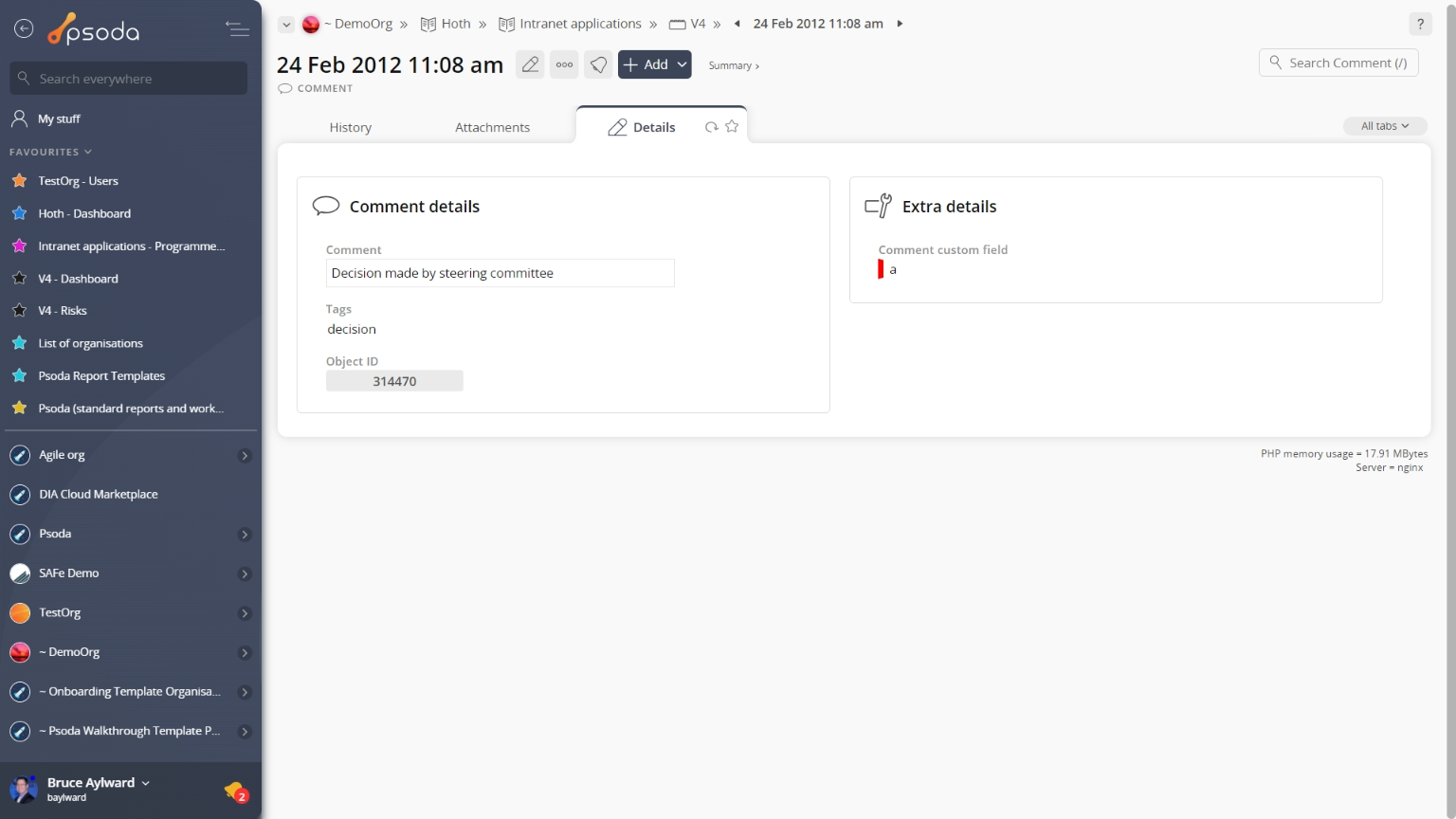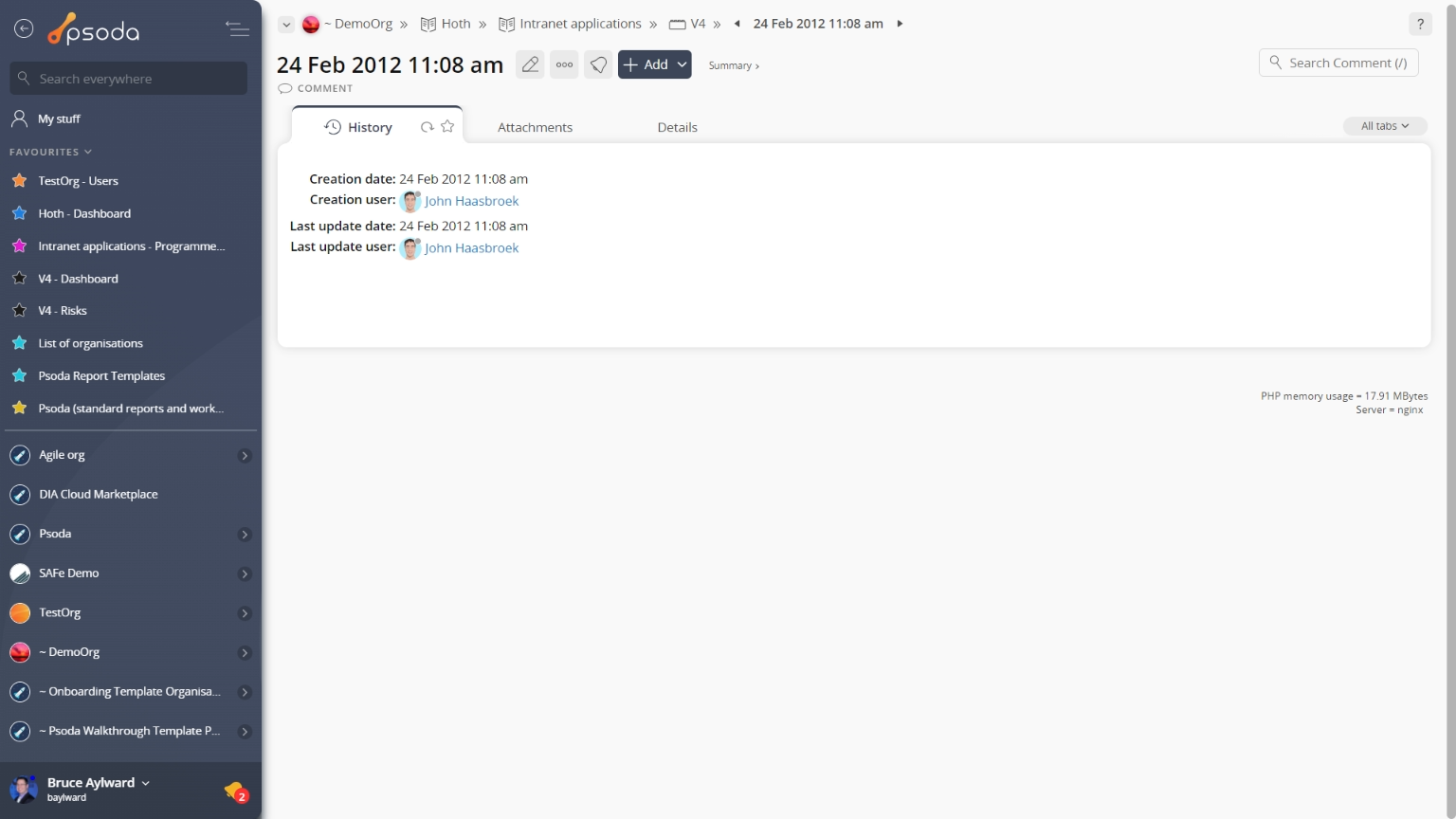To navigate into the comment’s view page, select the link beneath the last update date column of the Comments tab at the parent asset’s view page. This page is shown in Figure 1 and shows the details of the selected  comment.
comment.

 edit or
edit or  delete the comment; or to add a new
delete the comment; or to add a new  attachment to this comment.
Some details of the comment are displayed in subsections just below the top header area, such as the comment’s location within Psoda, and the comment itself and any associated keywords or tags. The rest of the page is made up of a number of tabs or sections (depending on your selected view):
attachment to this comment.
Some details of the comment are displayed in subsections just below the top header area, such as the comment’s location within Psoda, and the comment itself and any associated keywords or tags. The rest of the page is made up of a number of tabs or sections (depending on your selected view):
 Attachments
This tab shows an asset listing of all of the attachments that have been added to this comment, as shown in Figure 2. By default, this table will present you with a number of details about the attachments such as the file’s name, attachment type, view the version and access a download link.
From the Actions column of this attachments table, you can act on individual attachments by
Attachments
This tab shows an asset listing of all of the attachments that have been added to this comment, as shown in Figure 2. By default, this table will present you with a number of details about the attachments such as the file’s name, attachment type, view the version and access a download link.
From the Actions column of this attachments table, you can act on individual attachments by  editing,
editing,  deleting,
deleting,  moving or
moving or  locking/
locking/ unlocking the selected attachment.
unlocking the selected attachment.

 edit button at the bottom of the attachment table or navigate to this same spot to
edit button at the bottom of the attachment table or navigate to this same spot to  add more attachments to this comment. Here, you can also export this attachment list to
add more attachments to this comment. Here, you can also export this attachment list to  Excel or
Excel or  CSV files.
At the very bottom of this tabbed view, you have the option to add more attachments by utilising the drag and drop functionality to drag the files you wish to upload into the drop box (note that this function works in HTML5 compliant browsers only).
CSV files.
At the very bottom of this tabbed view, you have the option to add more attachments by utilising the drag and drop functionality to drag the files you wish to upload into the drop box (note that this function works in HTML5 compliant browsers only).
 History
This tab shows shows some basic history of the comment, as shown in Figure 3. By default, this tab will present you with a number of details about the comment’s history such as the creation date, creation user, last update date and last update user. If the comment has been changed then this section will also show a table of all the changes that has been made, including the date of each change, the field changed, the value before the change and the user who made the change.
History
This tab shows shows some basic history of the comment, as shown in Figure 3. By default, this tab will present you with a number of details about the comment’s history such as the creation date, creation user, last update date and last update user. If the comment has been changed then this section will also show a table of all the changes that has been made, including the date of each change, the field changed, the value before the change and the user who made the change.

Figure 1 – Comment view page
Depending on your access rights, the top header area allows you to
Figure 2 – Comment attachments tab
Note that you can customise your table view by clicking the
Figure 3 – Comment history tab
Note that you can customise your change table view by clicking the edit button at the bottom of the change table. Here, you can also export this list of changes to
Excel or
CSV files.